Atrio (“atrium”) restaurant is located within the walled old town of Caceres in Extremadura in western Spain. Caceres is about 300km southwest of Madrid, 315km east of Lisbon and 265km due north of Seville. The old town of Caceres was made a World Heritage site in 1986, and to give a sense of scale the city has a population of about 96,000 people. The area is known for its pimento and its yema egg cakes, but above all for its Iberico ham, with the local pigs raised on acorns.
Atrio itself was set up by chef Tono Perez and his husband Jose Antonio Polo in 1986. It is noted for its vast 45,000 bottle wine list (with 4,500 different wines), which was rated as the best in the world by Wine Spectator magazine. The list is displayed in a 444-page hardback book that can be purchased (currently priced at €88). They have Chateau d’Yquem in 95 different vintages going back to 1891. Several wine pairings are available for those who find such a huge list daunting. The restaurant held two Michelin stars for eighteen years from 2005 and gained the ultimate third star in the 2023 guide (announced in November 2022).
The old town exterior of Atrio is venerable but the inside is very modern, with several bedrooms as well as the dining room and bar. Tables are large and generously spaced. with precise lighting. In theory the restaurant can accommodate eighty diners, though there were nowhere near as many as that (perhaps a dozen) on this midweek dinner in January.
We had a chance to tour the massive wine cellar, where over 40,000 bottles are stored covering over 4,000 different wines. There is an extensive display of Chateau d’Yquem as well as many historical vintages of top wines from Bordeaux and Burgundy, in addition to an excellent selection of bottles from around Spain and further afield. The wine cellar is now protected by digital locks and extensive closed-circuit television after an elaborately planned wine robbery occurred here a few years ago.
The wine list, being in paper form, is not susceptible to detailed analysis, but it should be noted that the markups to retail price were wildly erratic. Some bottles were moderately marked up and others were outrageously priced, so this is a list where careful advance research will pay dividends and avoid any unpleasant surprises. A bottle of Chateau d’Yquem 2001 was priced at an incomprehensible €9,500 for a bottle that can be bought at a wine shop here In London for €513, more than eighteen times its retail price even before service is considered. Another sweet wine, Chateau Clemens 2001, was €1,500 compared to its shop price of €210, another completely unjustifiable price. Yet the pleasant Billecart Salmon Brut champagne was €130 for a bottle whose retail price was €37, so 3.5 times retail. Not a bargain for sure, but much closer to what is normal in a restaurant. Egon Muller Kabinett 2010 Riesling was €450 compared to its retail price of €190, so a perfectly reasonable 2.4 times retail. Maximin Grunhaus Riesling Kabinett 2016 was €60 compared to a retail price of about €43. Didier Dagenau Silex 2008 was €590 compared to its current retail price of €390, which works out at 1.5 times its retail price. Of course, there was a vast selection of Spanish wines. Alion Reserva 2019 was €190 compared to its retail price of €113, while Rioja Alta 904 Gran Reserva 2011 was €160 for a wine that costs €89 in a shop. There were old vintages aplenty, such as the Rioja Alta 890 Gran Reserva 1981 at €1,400 for a wine with a market value of €461. Some very old vintages again showed puzzling markup levels, such as the Rioja Alta 890 Gran Reserva 1975 at €1,400 for a wine with a market value of €300; you could even have the 1890 vintage of the same wine at a surreal €15,400, though who knows what that would fetch at auction. There were plenty of prestige wines. Romanee Conti 1990 was €45,500 compared to its current market value of €37,770, 1.2 times retail though of course representing a healthy cash margin. At the more modest end of the spectrum, Poderi Oddero Langhe Nebbiolo 2018 was €50 for a bottle whose shop price was €23, a 2.2 times markup. As you can see, the markups vary wildly.
The tasting menu itself, priced at €255 (£218) has a local ingredient streak running through it. The region is known for its tomatoes but especially for its high-class Iberico ham. The ham featured in every single course in one form or another, including dessert. An initial canapé was a thin sandwich of crispy potato filled with local goat cheese and dill. The crisp was very delicate and the dill nicely lifted the subtle flavour of the goat cheese (17/20). A little tapenade canapé was lovely, with deep olive flavour (19/20). A choux dough snack was flavoured with bacon and oregano and had good pastry and enjoyable bacon flavour (17/20). There was also a little soup of chickpea and pork that had tender chickpeas and excellent flavour (17/20). A little concoction involving tuna belly, red lard and caviar was lovely if a tad salty to some tastes (18/20).
A pretty tapioca decoration shaped like a butterfly was crunchy and covered a salmon emulsion and crispy pork; this worked very well (18/20). Served on a spoon was a raw shrimp marinated with garlic and chorizo; the shrimp itself was lovely and the marinade worked well (17/20).
The next grouping of dishes began with ham mayonnaise ice cream and cold soup of tomato. This presumably was intended to evoke a classic gazpacho and sounds exotic but tasted very good (17/20). Salchicon (smoked summer sausage) was a little ham with wheat and black pepper emulsion, and was very enjoyable (17/20). Banana flavoured crisps with pork pate and pickles had excellent pate with silky texture and strong flavour. Fortunately the banana flavour was subdued and did not intrude into the dish in the way I had feared that it might (18/20). Loin of pork cured with paprika had lots of flavour, the hint of spice from the paprika nicely lifting the dish (18/20).
Pate en croute was presented and carved into slices at the table. This featured a central mousseline of pork, truffles from north of Spain (Soria) and very good pastry. Each slice was served with a loin of pork, black pepper, capers and a mousse of tuna and anchovies, rather in the style of the Mediterranean veal dish vitello tonnato. This dish worked well, the capers providing some bite and the pepper at a well-judged level of seasoning (18/20). Squid ink coloured brioche was very pleasant and was the only sighting of bread in the meal (16/20).
Pork rinds and scallops from Galicia with spring onion sauce sounded interesting but the scallops had little flavour, with the pork dominating along with a celery flavour. Moreover, the dish was overly sharp and acidic so was not well balanced (12/20). Next was a flan made with pork jowl combined with shiitake mushrooms and caviar. This had deep pork flavour that worked nicely with the woodland taste of the mushrooms and the brininess of the caviar. However, the texture was uniformly very soft and for me desperately needed a crisp element like a biscuit or almost anything to provide textural balance (barely 16/20).
Glazed lobster came with a pork sauce and a little green curry laced with lemongrass. The lobster was tender and the gentle spice of the foam nicely lifted the dish and also avoided too much richness from the pork (16/20). Next was pork cheek with saltwater crawfish from Galicia and a creamy chicken broth flavoured with foie gras. The crayfish was tender and combined well with the pork (18/20). The final savoury element was partridge with a little glass of consommé on the side. The bird had deep flavour but very soft texture; the consommé was well made and had intense flavour. Overall, it was rather rich though enjoyable and may have benefited from an additional element to provide a contrast of textures (17/20).
Cheese came in the form of a green hemisphere with a biscuit flavoured with Iberian ham, oregano and sheep cheese along with an olive oil biscuit with quince marmalade and an ice cream made from the cheese. This was quite technical and doubtless very clever though to be honest I would rather have just eaten from a regular cheese board.
The sweet dishes started with a yuzu ganache with yoghurt, fennel and pork rinds that was distinctly ordinary, the sharpness of the yuzu curiously subdued, the pork rinds simply out of place (13/20). Odder still was “Iberian chocolate” that had coffee ground like pepper over a creme brulee coffee ice cream flavoured with yellow lard of aged Iberian ham along with meringue laced with anise and a biscuit that tasted of olive oil. This was an experiment too far for me, and whatever technical skill was on display here was overshadowed by a dish that simply was not very enjoyable to eat (barely 12/20).
Coffee capsules were used here, filled with the pleasant Kilimanjaro blend from Nespresso. A nicely displayed tray of petit fours included a “cherry” that was actually a ganache of white chocolate coloured to resemble a cherry. There was a coconut biscuit, a good beignet, little muffins, a lemon macaroon, raspberry jelly, a jelly of apple and orange and a Valrhona chocolate. These were all very nice, showing that the kitchen was perfectly capable of producing some enjoyable desserts if it put its mind to it and omitted its obsession with injecting pork into desserts. which is never going to be a very successful idea at the best of times.
Service was classy, the staff friendly and attentive throughout. The bill came to €478 (£409) per person. The chef was very friendly though there was one little moment that rankled. When I was waiting for my dining companions in the bar the chef popped in before service to have a little chat. He pulled up a chair and beckoned over a waitress and asked her to bring two glasses of manzanilla sherry. I had yet to order anything to drink, sampled the sherry that was brought but didn’t have much as I was saving myself for the wine list. This all seemed a very friendly gesture yet two glasses of sherry appeared on my bill when I checked out the following day.
Atrio was an enjoyable enough experience, but the decision to feature pork in every course, even the desserts, sounded intriguing but in the end it seemed repetitive and artificial. Some dishes felt contrived, with a pork element somehow levered into the dish to retain the concept. There was also a theme of very soft textured dishes, with one or other mayonnaise-like consistency appearing in dishes that could easily have been improved by adding some crisper dish elements or even (which seems to be heresy in Spanish fine dining) the odd vegetable. The wine list is vast but the erratic and eccentric pricing makes it something of a minefield to navigate.


































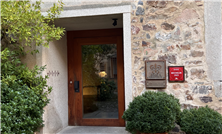

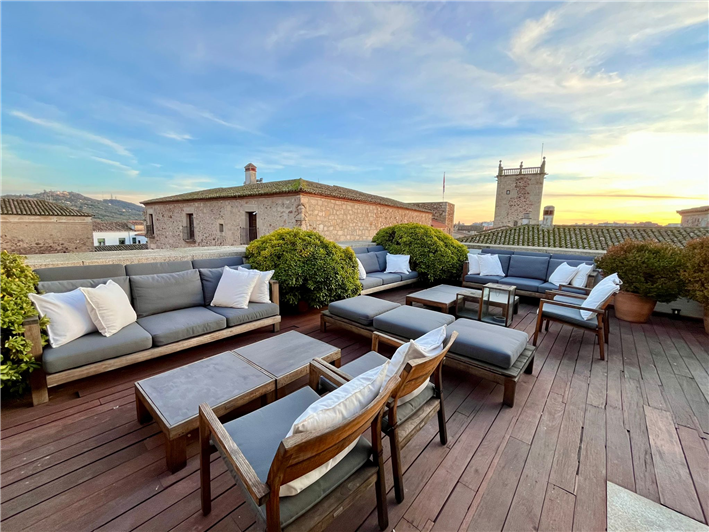

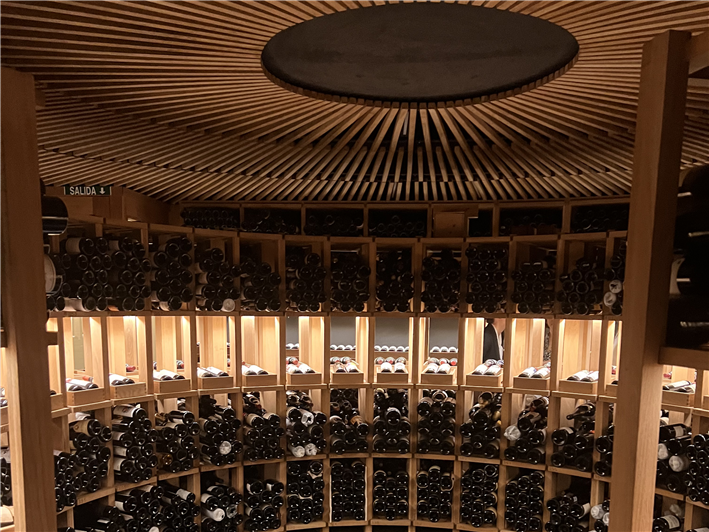
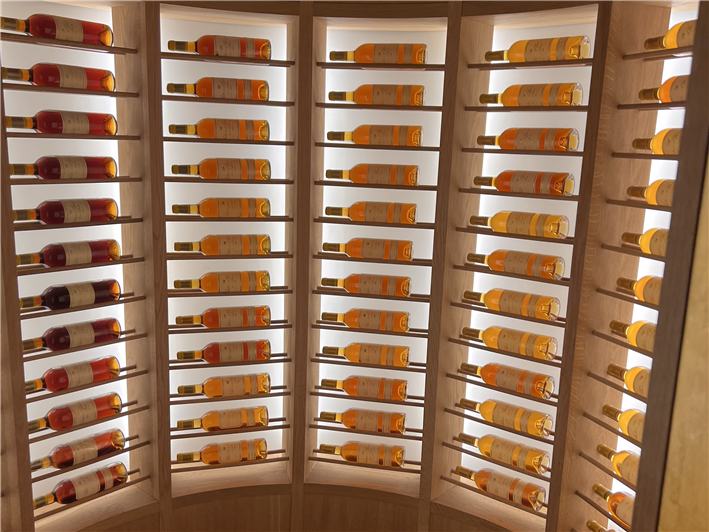

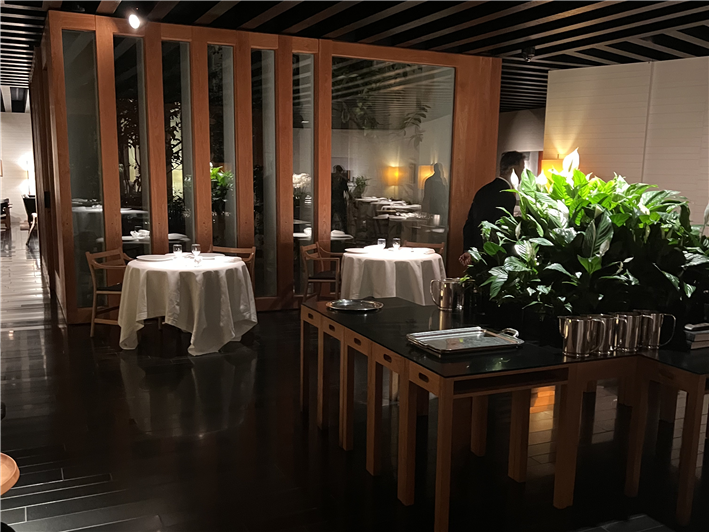
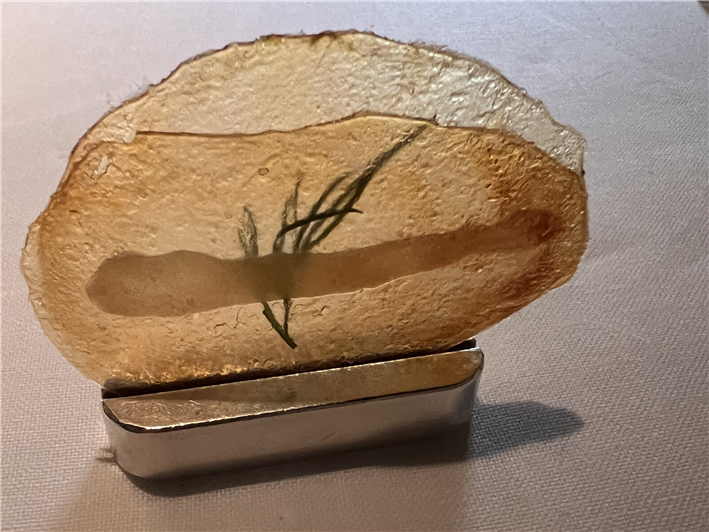
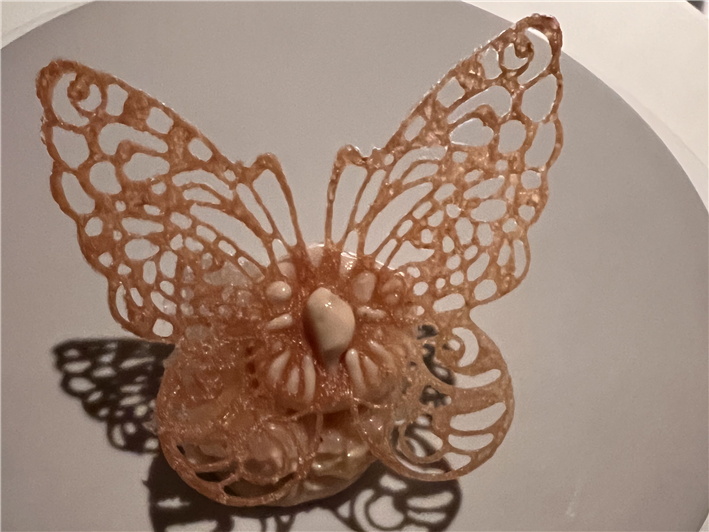
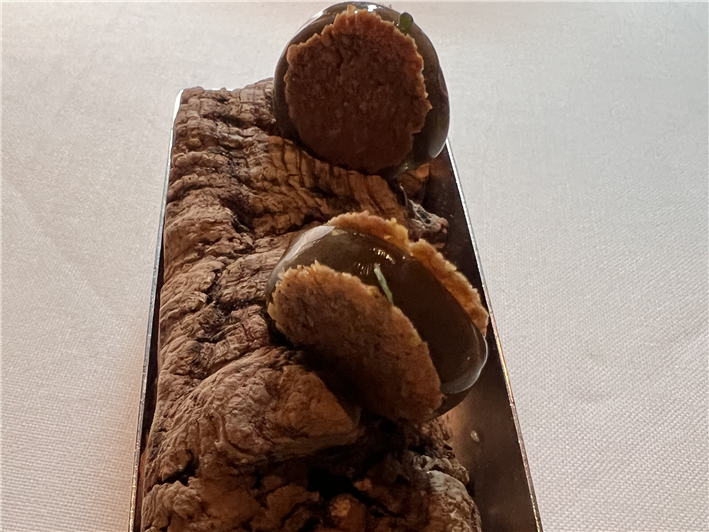

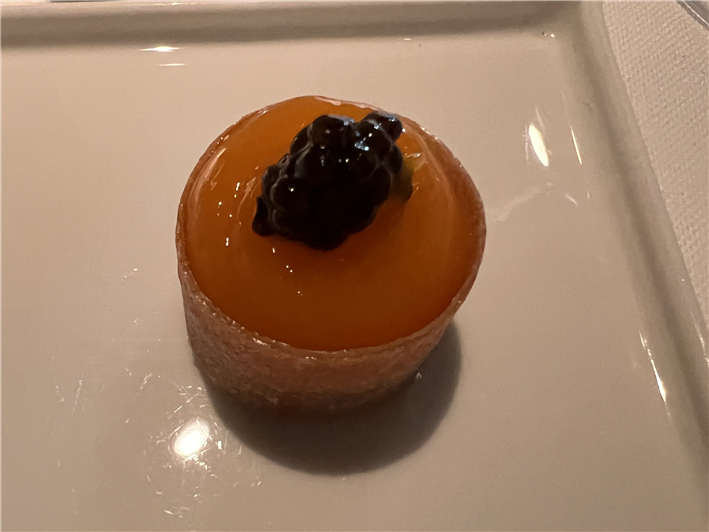

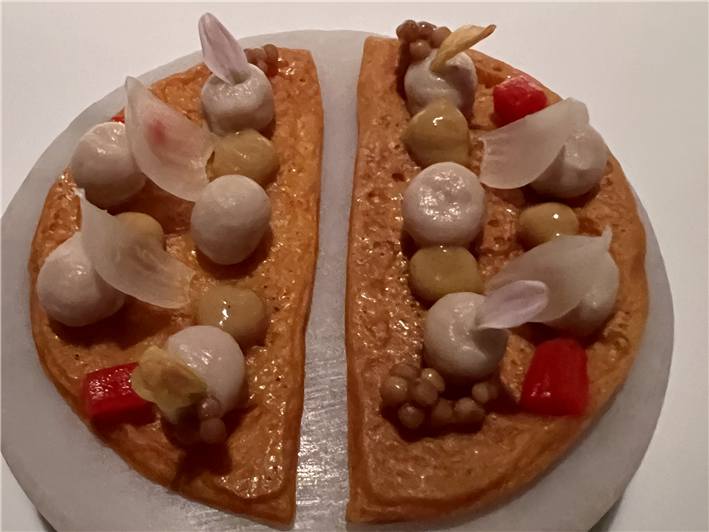

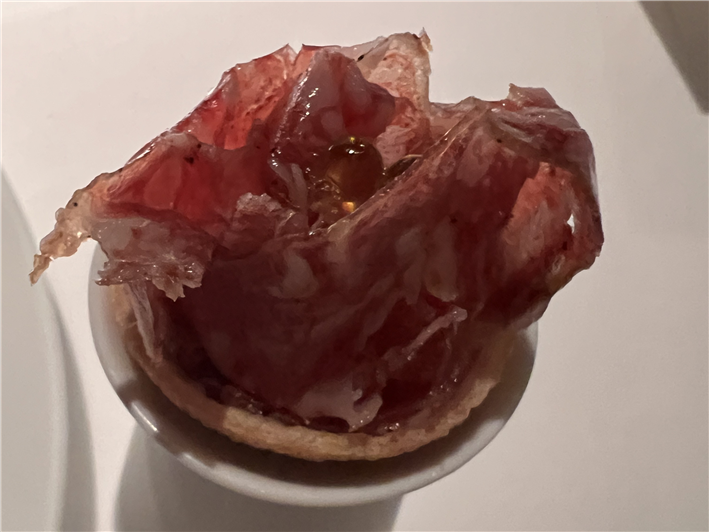
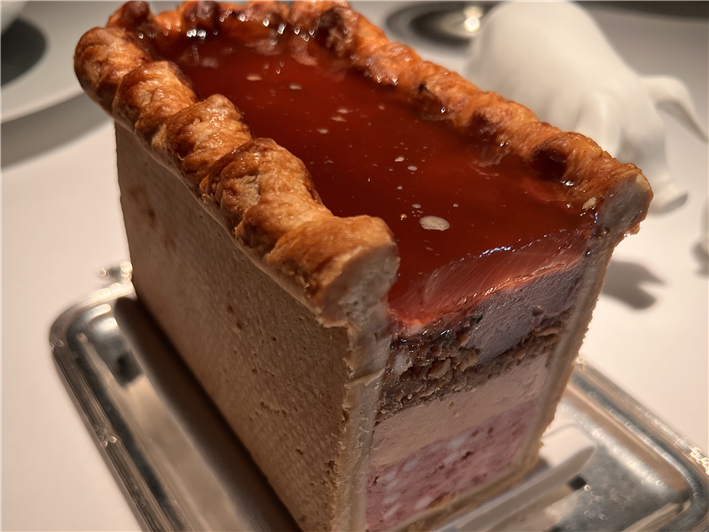
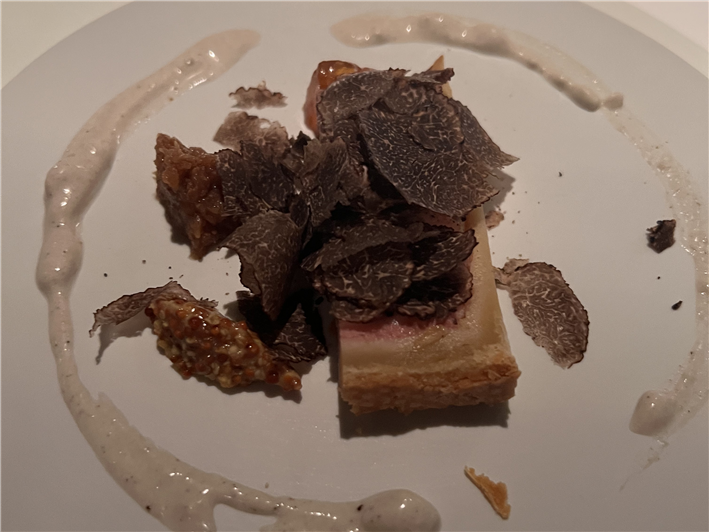

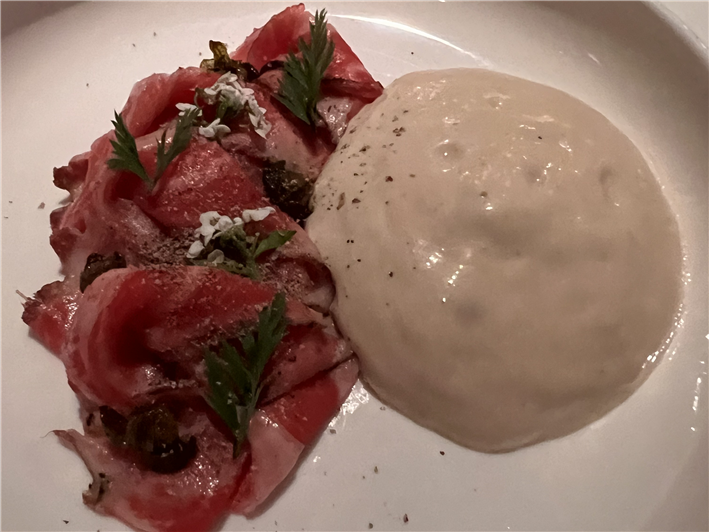

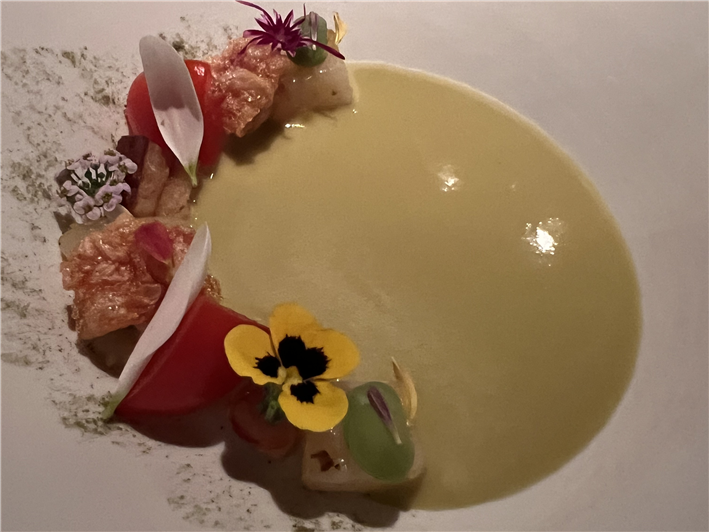




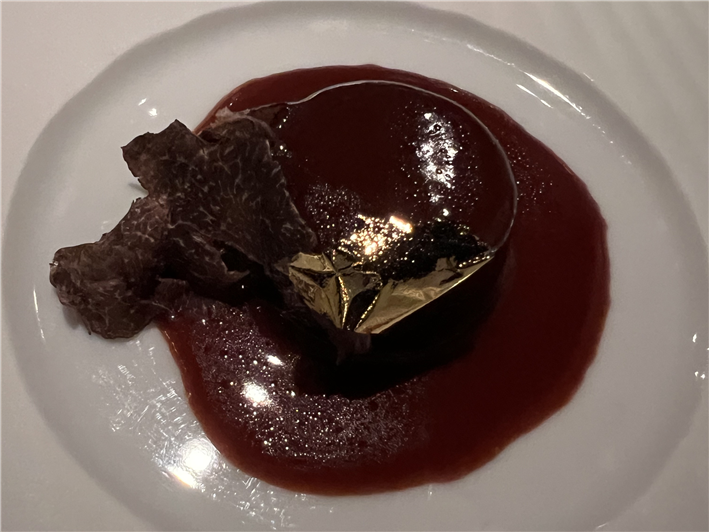

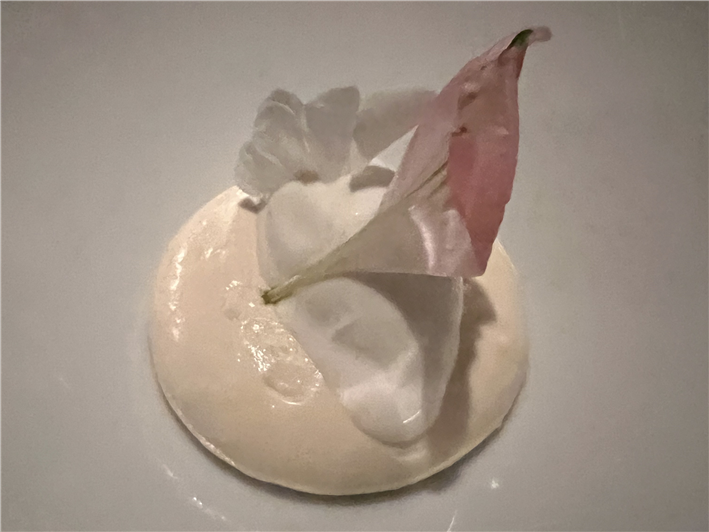
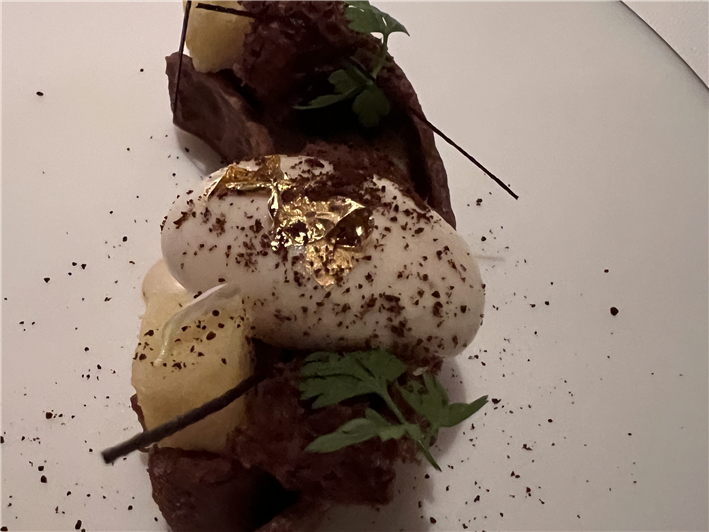
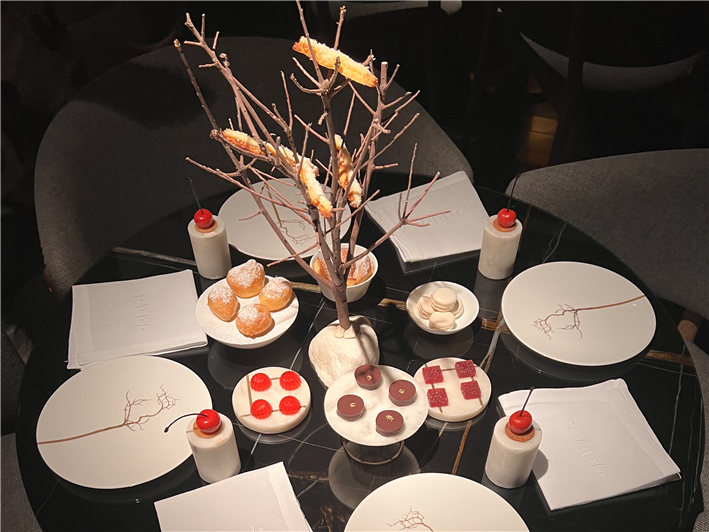
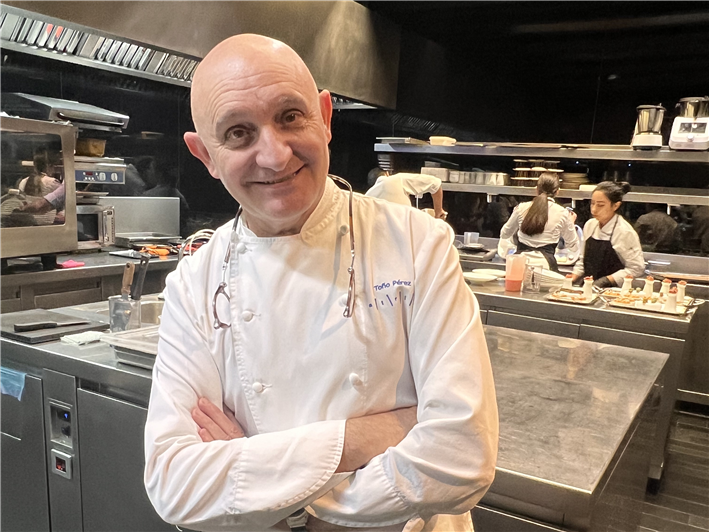

Add a comment
Thank you for submitting your comment, this will be checked and added to the website very soon.
User comments